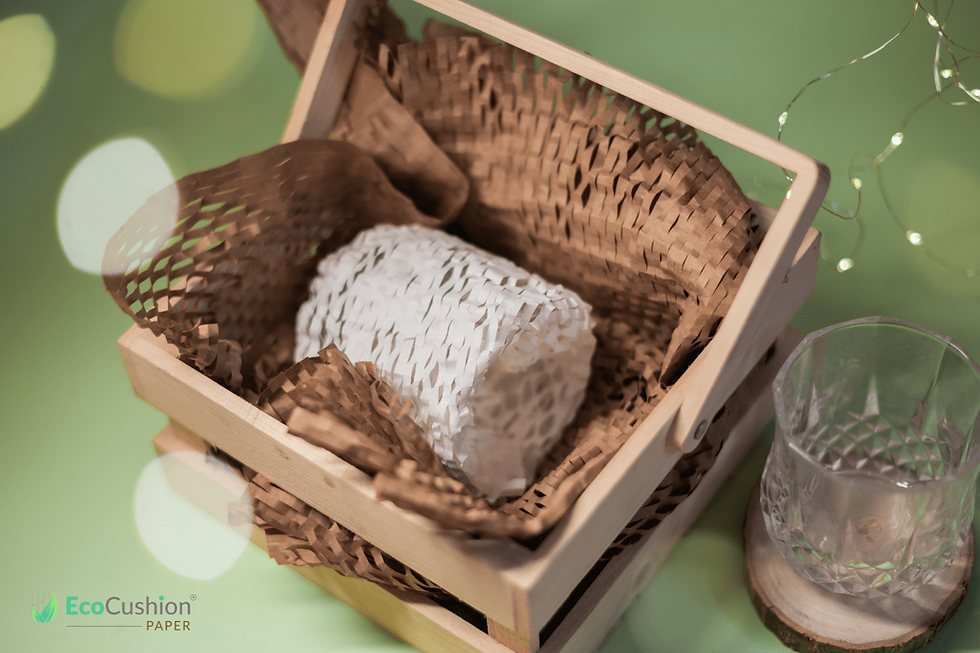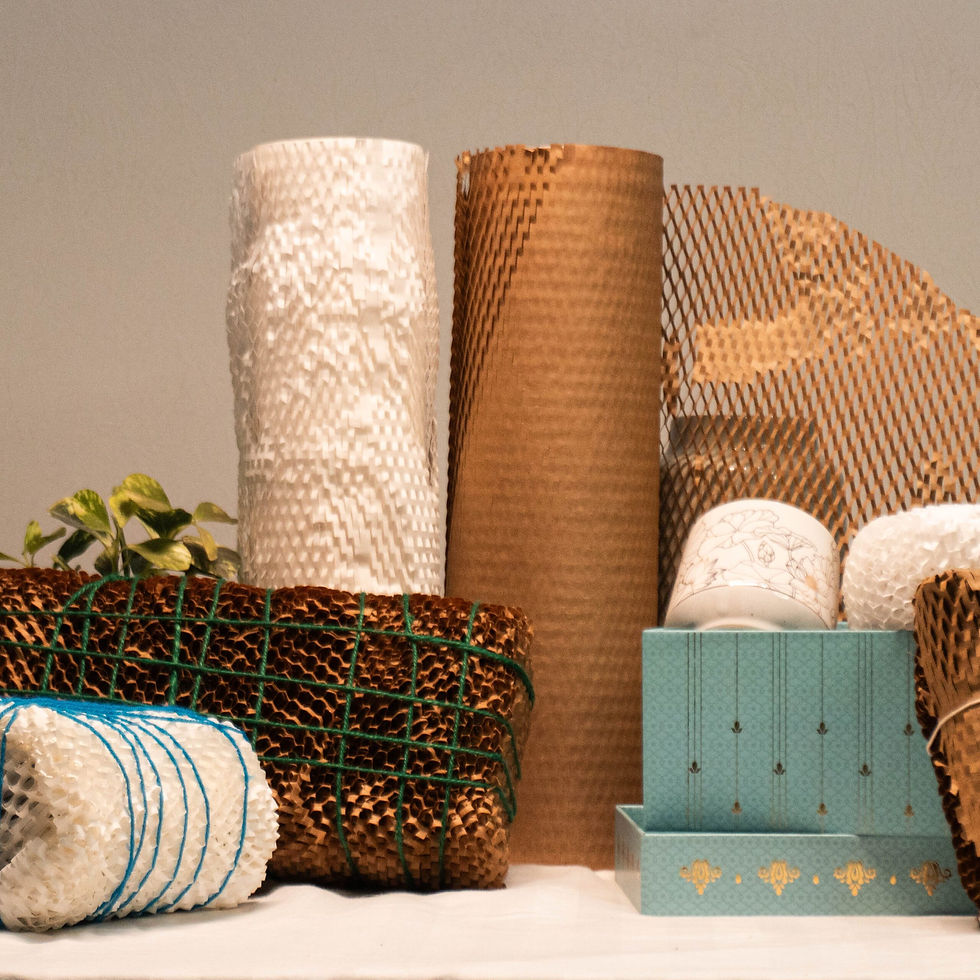Is Bubble Paper Better Than Bubble Wrap? A Complete Comparison
- eco cushionpaper
- Aug 5
- 3 min read
When it comes to protecting items during shipping, packaging materials play a crucial role. For years, bubble wrap has been the go-to solution for businesses and individuals shipping fragile products. But recently, a new eco-friendly alternative has been gaining traction — bubble paper. So the big question is: Is bubble paper better than bubble wrap? Let’s dive into a full comparison to help you decide which one is the right fit for your packaging needs.
What is Bubble Paper?
Bubble paper is an innovative and eco-conscious packaging material made from kraft paper that’s designed to mimic the cushioning effect of traditional plastic bubble wrap. It features a unique honeycomb or bubbled texture that provides excellent protection while remaining lightweight, flexible, and biodegradable.
Unlike bubble wrap, which is made from plastic and takes hundreds of years to decompose, bubble paper is made using recyclable and often recycled materials, making it a much greener option for environmentally conscious businesses and individuals.
1. Eco-Friendliness: Bubble Paper Takes the Lead
If sustainability is a priority for you or your brand, bubble paper is the clear winner. Traditional bubble wrap is made from polyethylene—a plastic that is rarely recycled and often ends up in landfills or oceans. It contributes to environmental pollution and takes centuries to break down.
On the other hand, bubble paper is made from kraft paper and is fully recyclable, compostable, and biodegradable. That means no toxic waste, no microplastics, and no guilt. For green businesses or anyone aiming to reduce their environmental footprint, bubble paper is the smarter choice.

2. Protection & Cushioning: How Do They Compare?
Here’s where things get interesting. Bubble wrap has long been favored for its excellent cushioning. Its air-filled bubbles provide superior protection against shock and impact—especially for fragile items like glassware, ceramics, and electronics.
Bubble paper, however, holds its own. Thanks to its honeycomb design or folded paper texture, it creates a 3D structure that absorbs impact very well. It might not outperform heavy-duty bubble wrap in extreme cases, but for most everyday shipping needs—like e-commerce orders, gifts, cosmetics, and more—it provides more than enough protection.
Plus, bubble paper is flexible and stretchable, making it easy to wrap around products of all shapes and sizes.
3. Space & Storage Efficiency
Traditional bubble wrap is bulky. It takes up a lot of storage space and can be inconvenient for smaller warehouses or home-based businesses. Bubble paper, in contrast, is shipped in compact rolls and expands only when used, saving valuable storage space.
This makes bubble paper not only eco-friendly but also space-efficient—especially beneficial for small businesses with limited storage capacity.
4. Aesthetic Appeal & Customer Experience
Let’s be honest—packaging matters. In today’s e-commerce world, unboxing is an experience. Bubble wrap often looks cheap and unappealing, and many customers dislike receiving plastic.
Bubble paper looks modern, clean, and eco-conscious. It enhances your product presentation and shows customers that your brand values sustainability. This can help improve customer satisfaction, increase repeat purchases, and create a stronger brand identity.
5. Cost Comparison
Cost is always a consideration. Traditional bubble wrap is often cheaper per unit, especially when bought in bulk. However, this cost difference is narrowing as bubble paper becomes more popular and widely available.
Plus, when you factor in the environmental benefits, potential tax incentives for using sustainable materials, and the positive impact on your brand reputation, bubble paper often offers better long-term value.
6. Disposability & End-of-Life Impact
Disposing of plastic bubble wrap is not always straightforward. Many recycling centers don’t accept it, and improper disposal leads to environmental harm.
Bubble paper, however, can be easily recycled with other paper products or even composted at home. It simplifies the disposal process for your customers, making your entire packaging experience more user- and eco-friendly.
Final Verdict: Is Bubble Paper Better?
If you're looking for a packaging material that:
Offers great protection
Enhances your brand image
Reduces environmental impact
Saves storage space
And appeals to eco-conscious consumers
...then yes, bubble paper is the better choice.
While bubble wrap may still be suitable for certain heavy-duty applications, bubble paper is more than capable for most e-commerce, retail, and shipping needs. It’s not just about packaging anymore—it’s about making thoughtful, sustainable choices that reflect your brand’s values.



Comments